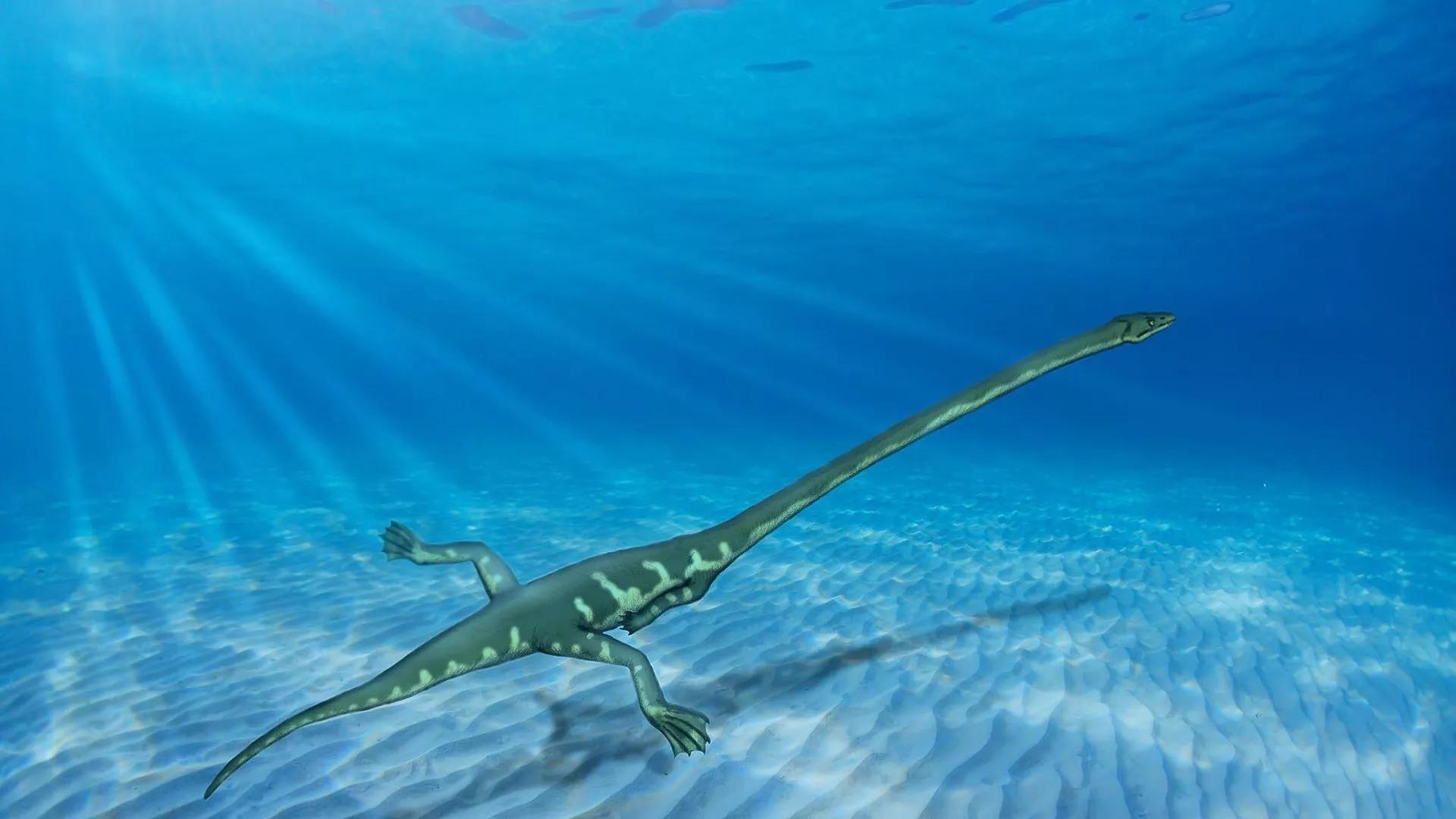Africa-Press – Lesotho. A group of paleontologists have analyzed a fossil find from a site in the Alps and discovered the creature was decapitated by a bite from a massive predator.
However, the skeleton already belongs to one of the biggest hunters known to paleontologists. In the ancient Earth seas of 240 million years ago, Tanystropheus hydroides was a terror of the deep.
At 20 feet long and with a neck three times the length of its body, Tanystropheus could ambush its prey of fish and squid long before they knew such a large creature was nearby.
However, one unfortunate Tanystropheus found at the Monte San Giorgio fossil site on the Swiss-Italian border learned in its final moments an important maxim: there’s always a bigger fish. According to a group of paleontologists in Germany and Switzerland, the creature’s neck was severed by a single massive bite from another predator.
Stephan Spiekman, a vertebrate paleontologist at the State Museum of Natural History Stuttgart, in Germany, said he initially thought he was studying two different specimens of long-necked marine creatures of a much smaller variety than Tanystropheus hydroides until he realized the horrible truth: telltale bite marks on the vertebrae showed they had once been part of a single creature’s neck.
“It is very plausible that a large predator bit [off] the neck in one go, especially considering the large predators that were around in that environment,” he added.
Their study further analyzed the attack and determined the Tanystropheus was ambushed from above by a creature that likely targeted the neck in order to kill the creature quickly.
Since no trace of the creature’s body apart from the neck was found, the predators likely feasted on it as the neck fell away. However, a mystery still remained: who killed Tanystropheus?
By looking at the size of the toothmarks and comparing it to a list of the creatures found at the fossil site, the paleontologists narrowed it down to a “final list of suspects,” Spiekman said.
They came up with three names: Cymbospondylus buchseri, an 18-foot-long ichthyosaur that resembled a giant dolphin Nothosaurus giganteus, a huge reptile with an elongated neck – albeit nothing like Tanystropheus – that could reach 23 feet in length
Helveticosaurus zollingeri, a creature about which paleontologists have incomplete information, but which seems to have been about 12 feet long that may have resembled a marine iguana but with a bigger, toothier snout
Other mysteries will have to remain unsolved, such as how such big, deep-water creatures were able to encounter Tanystropheus, which typically hunted in shallow lagoons. The findings were published on Monday in the journal Current Biology.
For More News And Analysis About Lesotho Follow Africa-Press






